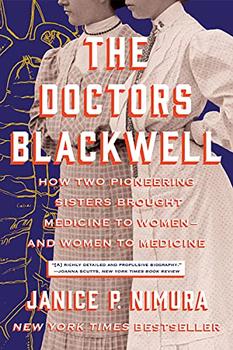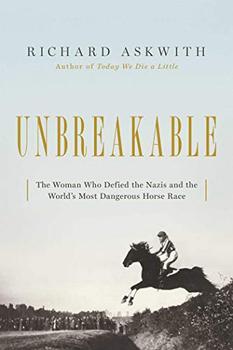Summary | Excerpt | Reviews | Beyond the book | Read-Alikes | Genres & Themes | Author Bio

The Turbulent Lives of Lord Byron's Wife and Daughter: Annabella Milbanke and Ada Lovelace
by Miranda SeymourA masterful portrait of two remarkable women, revealing how two turbulent lives were always haunted by the dangerously enchanting, quicksilver spirit of that extraordinary father whom Ada never knew: Lord Byron.
In 1815, the clever, courted, and cherished Annabella Milbanke married the notorious and brilliant Lord Byron. Just one year later, she fled, taking with her their baby daughter, the future Ada Lovelace. Byron himself escaped into exile and died as a revolutionary hero in 1824, aged 36. The one thing he had asked his wife to do was to make sure that their daughter never became a poet.
Ada didn't. Brought up by a mother who became one of the most progressive reformers of Victorian England, Byron's little girl was introduced to mathematics as a means of calming her wild spirits. Educated by some of the most learned minds in England, she combined that scholarly discipline with a rebellious heart and a visionary imagination. As a child invalid, Ada dreamed of building a steam-driven flying horse. As an exuberant and boldly unconventional young woman, she amplified her explanations of Charles Babbage's unbuilt calculating engine to predict - as nobody would do for another century - the dawn of the modern computer age. When Ada died, like her father, she was only 36, great things seemed still to lie ahead for her as a passionate astronomer. Even while mired in debt from gambling and crippled by cancer, she was frenetically employing Faraday's experiments with light refraction to explore the analysis of distant stars.
Drawing on fascinating new material, Seymour reveals the ways in which Byron, long after his death, continued to shape the lives and reputations both of his wife and his daughter. During her life, Lady Byron was praised as a paragon of virtue; within ten years of her death, she was vilified as a disgrace to her sex. Well over a hundred years later, Annabella Milbanke is still perceived as a prudish wife and cruelly controlling mother. But her hidden devotion to Byron and her tender ambitions for his mercurial, brilliant daughter reveal a deeply complex but unexpectedly sympathetic personality.
Miranda Seymour has written a masterful portrait of two remarkable women, revealing how two turbulent lives were often governed and always haunted by the dangerously enchanting, quicksilver spirit of that extraordinary father whom Ada never knew.
In Byron's Wake shines a light on the lives of Lord Byron's wife, Annabella Milbanke, and their daughter, Ada Lovelace, who both spent their lives with his shadow hanging over them. Though there are a few organizational flaws, this book reveals fascinating details about the painful legacy of a disastrous relationship and how these two women chose to define themselves in spite of, or because of it...continued
Full Review
 (957 words)
(957 words)
(Reviewed by Rose Rankin).
 Great art frequently evolves among talented people who share ideas with each other and who challenge themselves to greater and greater heights in the presence of fellow creatives. This was the case with one of the most famous works of Western literature, Frankenstein by Mary Shelley. Devised among her literary companions (including Lord Byron) and refined and edited over time, Shelley's creation benefited from her unconventional lifestyle and experience, and it remains one of the triumphs of the Romantic period.
Great art frequently evolves among talented people who share ideas with each other and who challenge themselves to greater and greater heights in the presence of fellow creatives. This was the case with one of the most famous works of Western literature, Frankenstein by Mary Shelley. Devised among her literary companions (including Lord Byron) and refined and edited over time, Shelley's creation benefited from her unconventional lifestyle and experience, and it remains one of the triumphs of the Romantic period.
In 1816, Mary Godwin was a 19-year-old unwed mother living with her lover Percy Shelley, with whom she had caused a major ...

If you liked In Byron's Wake, try these:

by Janice P. Nimura
Published 2022
Elizabeth Blackwell believed from an early age that she was destined for a mission beyond the scope of "ordinary" womanhood.

by Richard Askwith
Published 2021
The courageous and heartbreaking story of a Czech countess who defied the Nazis in a legendary horse race.
No pleasure is worth giving up for the sake of two more years in a geriatric home.
Click Here to find out who said this, as well as discovering other famous literary quotes!